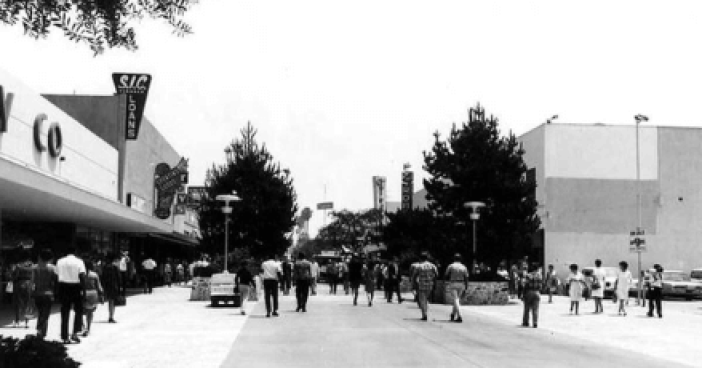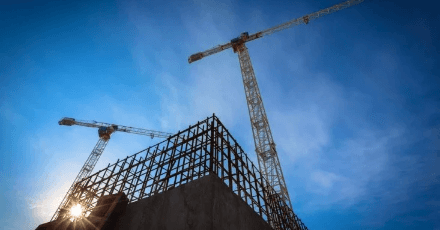In preparation for this article, I checked out the Internet – Googling the phrases “meaning of American history,” “guidelines to historical interpretation,” “hometown histories” and so on. But I didn’t get too far because there were so many different angles one could consider, and the searches are too numerous to mention. The places we all live have unique stories to tell, and as time marches on, many of these stories can be lost if there is no effort to preserve them.

Picture this: I am a professional historian, and as I walk down the street in my neighborhood, I often revert back to my profession and consider the historical meaning of any one tract home right here and then that strip mall over there.
The remodeled mall near the arterial is really ugly, but it has attached duplexes built in the Dingbat Style! There are big homes with mansard roofs across the arterial – they must have been made in 1970. What about that old guy who lived in the orchard house next door? He was an interesting character, served in The Big One – WW2. Lieutenant Somebody… maybe the Lieutenant bought his big old house from the guy who planted by hand the 320 acres of navel oranges along Grand Avenue in 1925. That farmer was a founding father of Covina, the city in which I live. After the orchard was sold in 1957, the houses across the way were built in the Ranch Style – a favorite of folks in Southern California in the 1950’s and 1960’s – with a low hip roof and an odd ridgeline that glides upward a little at both ends. It seems most of the homes in my tract were built that way because Tiki styling was popular in 1959-1960. My house is one of the few that has a cedar roof, but the ridge line is not peaked for some reason. But mine does have the dovecotes that hide the attic vent…
 My town was mostly involved in citrus until about 1956, when the wasting disease killed-off the navel orange trees in the San Gabriel Valley. My neighborhood is all uniform tract housing except for those 5 acres over to the left that still has some trees on it. They don’t produce, but that lot is pretty unique for this area… And clearly the farm house down in Whittier near Grandma’s should be restored because Richard Nixon grew up there. I heard that someone put that house on the National Register of Historic Places a few years after he died…
My town was mostly involved in citrus until about 1956, when the wasting disease killed-off the navel orange trees in the San Gabriel Valley. My neighborhood is all uniform tract housing except for those 5 acres over to the left that still has some trees on it. They don’t produce, but that lot is pretty unique for this area… And clearly the farm house down in Whittier near Grandma’s should be restored because Richard Nixon grew up there. I heard that someone put that house on the National Register of Historic Places a few years after he died…
Maybe soon my neighborhood will be subject to redevelopment because a new rail line is going in or those new freeway lanes have to be built. Once completed, the rattling might shake some of the buildings, including my own, to the point where their foundations will begin to fail. My city’s council will have to think about that when the plans are presented. In West Covina, the tract houses are older, and since termites are a huge problem in Southern California, many of the old homes in West Covina are too eaten away to save. Mine is pretty solid, so maybe the new freeway lanes can go on the south side where those poorly preserved houses are located – avoiding my neighborhood and impacting West Covina instead.
All of the little things mentioned above, which run through my brain when I go walking, are thematic. Age and eras, persons, events, and the promise of new knowledge are themes I must consider. These pieces of history are represented by what we see every day. The most important things about a place are often realized by thoughtful people, not just historians, after they consider the idea of “place” for awhile and what it means to people.
Professional historians engaged in environmental compliance, like yours truly, need to devise logical themes of analysis in order to determine what’s considered historically important to a
community. It’s a very democratic way of performing work. In total unity, we historians feel that when structures get old, we shouldn’t just tear them down and build anew without thinking it over for a little while and helping other people to think it over for a little while, although sometimes the pressures to tear an old structure down are immense. Analyzing the many little tendrils of history allows us to determine what pieces of our past should be saved, and what might be important for future generations. It’s an on-going and ever-changing process. In addition, we have to consider other themes of analysis that, once brought forth by the public, will have to be added to the record and made part of our research.
I’ve heard that my City is going to want to approve a new tract of condos in old downtown. Guidelines in the California Environmental Quality Act (CEQA) require that the City of Covina consider impacts to historical resources before they approve the project. “Historical resources” include buildings more than 45 years old, prehistoric archaeological sites, intact landscapes, sites sacred to Native Americans, and cemeteries. They have to hire a historian to examine the possibility that some of those old structures and sites in the condo project area shouldn’t be destroyed. Perhaps they constitute unique examples of a particular style, or maybe the last working orchard is there; maybe even someone famous grew up there.
My city has a past that is rooted in the citrus industry, but there are no citrus groves here
now. However, due to historic and cultural resources management, everyone who lives here knows what that past once was. Monuments and photos and the City logo have the images of fresh oranges and lemons, and many of the older people around town worked in packing houses when they were teenagers, earning a little bit of spending money. All that exists today has hints of that past. It’s what we want to be – a small town inside a suburb of Los Angeles. Without consideration of the environmental consequences of history, my town would become a rather bland place and we would forget who we are. Once it’s gone, it can never come back, and what we call ‘home’ will cease to be. For another perspective on this subject, click here to read an interesting NPR article on another area dealing with such issues.
FCS-MBA cultural and historic resources management teams are ready to devise solutions for future development so that the historical and emotional needs of a proud community can be met. Future blog posts will discuss how historians go about technically analyzing the past as part of the planning process.





